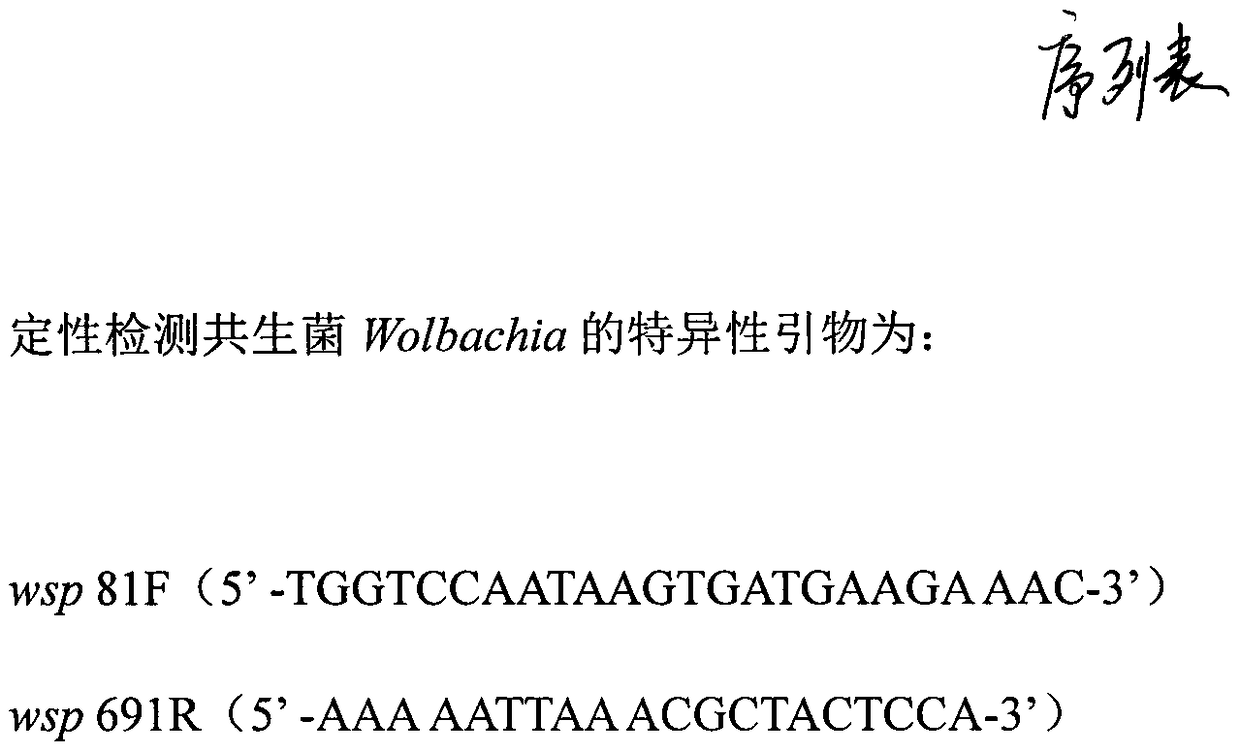Method for regulating and controlling pest populations by using symbiotic bacteria in parasitic wasps
A technology of parasitic wasps and symbiotic bacteria, applied in the field of pest control, to achieve the effects of reducing environmental pollution, improving parasitic ability, and improving pest control ability
- Summary
- Abstract
- Description
- Claims
- Application Information
AI Technical Summary
Benefits of technology
Problems solved by technology
Method used
Image
Examples
Embodiment 1
[0022] In the early stage of the emergence of the rice borer, such as the eggs collected on May 1, the ratio of the population of the rice borer to the population of the rice borer Trichogramma was 27.8. At this time, the infection rate of the rice borer symbiotic Wolbachia was high, which was 44.3%, and the female ratio of Trichogramma rice borer is also high, which is 93.6%.
Embodiment 2
[0024] In the early stage of the emergence of the rice borer, such as the eggs collected on May 2, the ratio of the population of the rice borer to the population of the rice borer Trichogramma was 22.7, and the infection rate of the rice borer symbiotic Wolbachia reached 41.5%. The female ratio of Trichogramma borer is as high as 90%.
Embodiment 3
[0026] In the middle and late stages of the emergence of the rice borer, that is, the eggs of the rice borer were collected on May 10, the ratio of the population of the rice borer to the population of the rice borer Trichogramma dropped to 16.3, and the infection rate of the endosymbiotic bacteria Wolbachia in the rice borer was lower than that in the early stage It decreased to 37.4%. At this time, the female ratio of Trichogramma rice borer also decreased to 84.9%.
PUM
 Login to View More
Login to View More Abstract
Description
Claims
Application Information
 Login to View More
Login to View More - R&D
- Intellectual Property
- Life Sciences
- Materials
- Tech Scout
- Unparalleled Data Quality
- Higher Quality Content
- 60% Fewer Hallucinations
Browse by: Latest US Patents, China's latest patents, Technical Efficacy Thesaurus, Application Domain, Technology Topic, Popular Technical Reports.
© 2025 PatSnap. All rights reserved.Legal|Privacy policy|Modern Slavery Act Transparency Statement|Sitemap|About US| Contact US: help@patsnap.com

